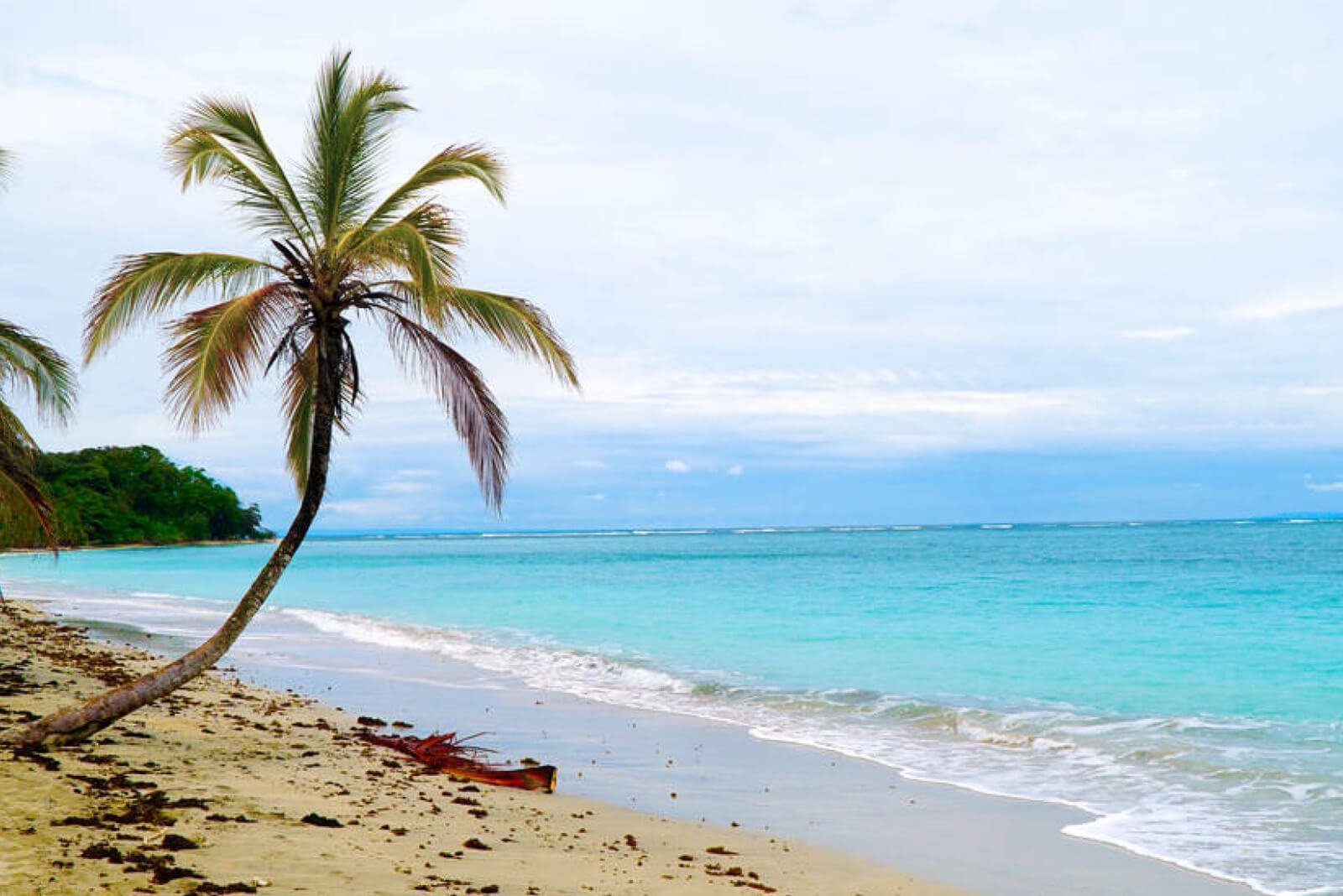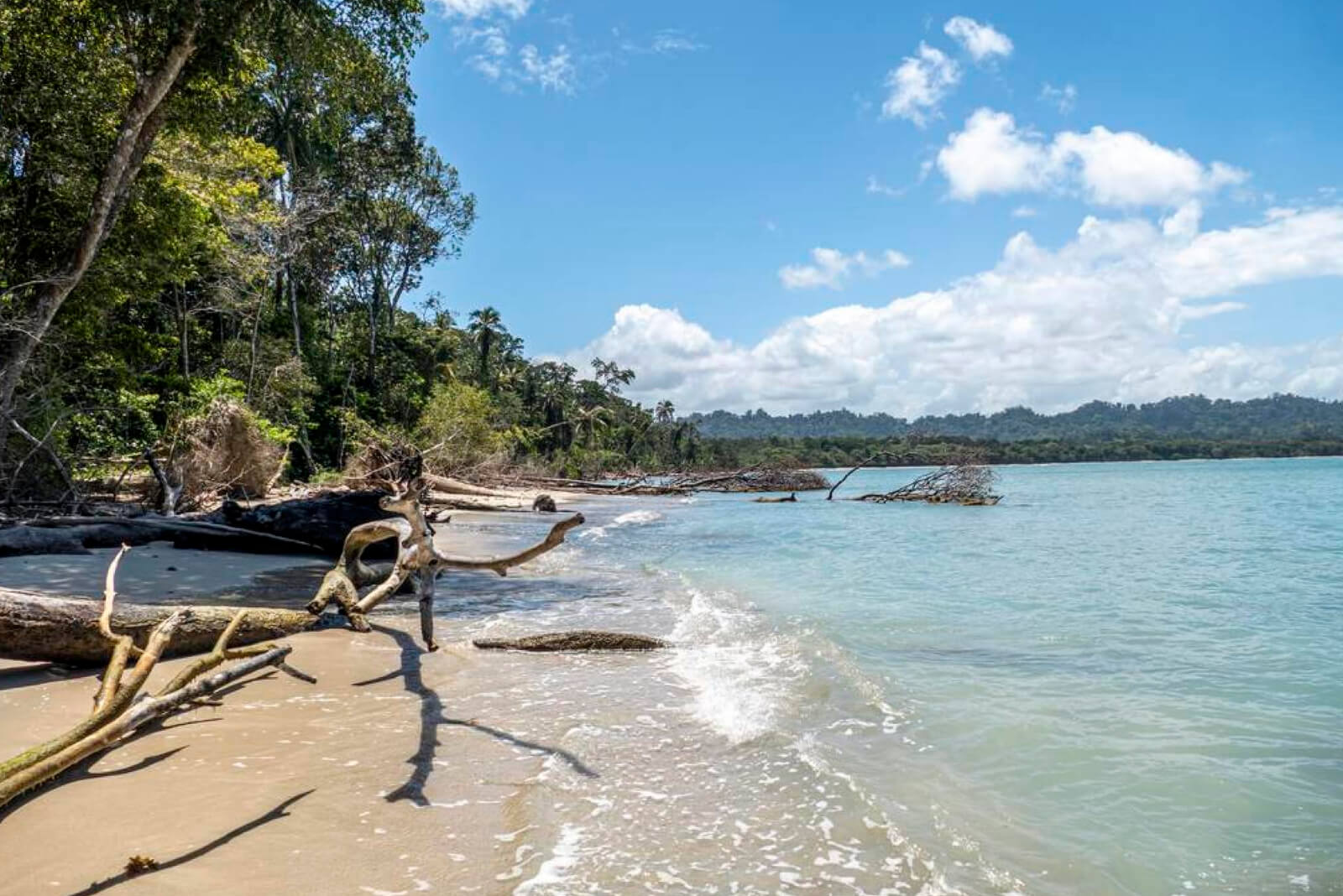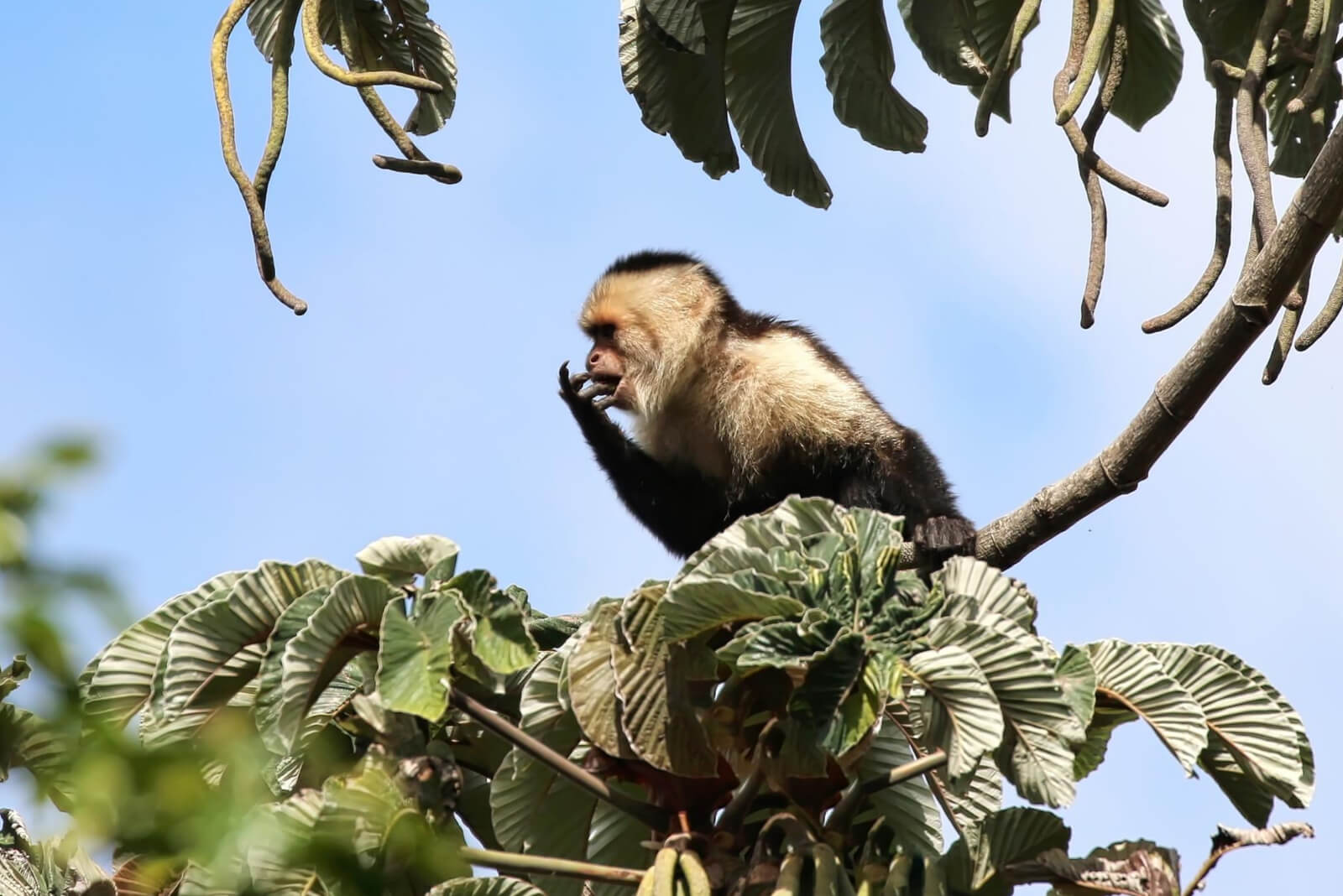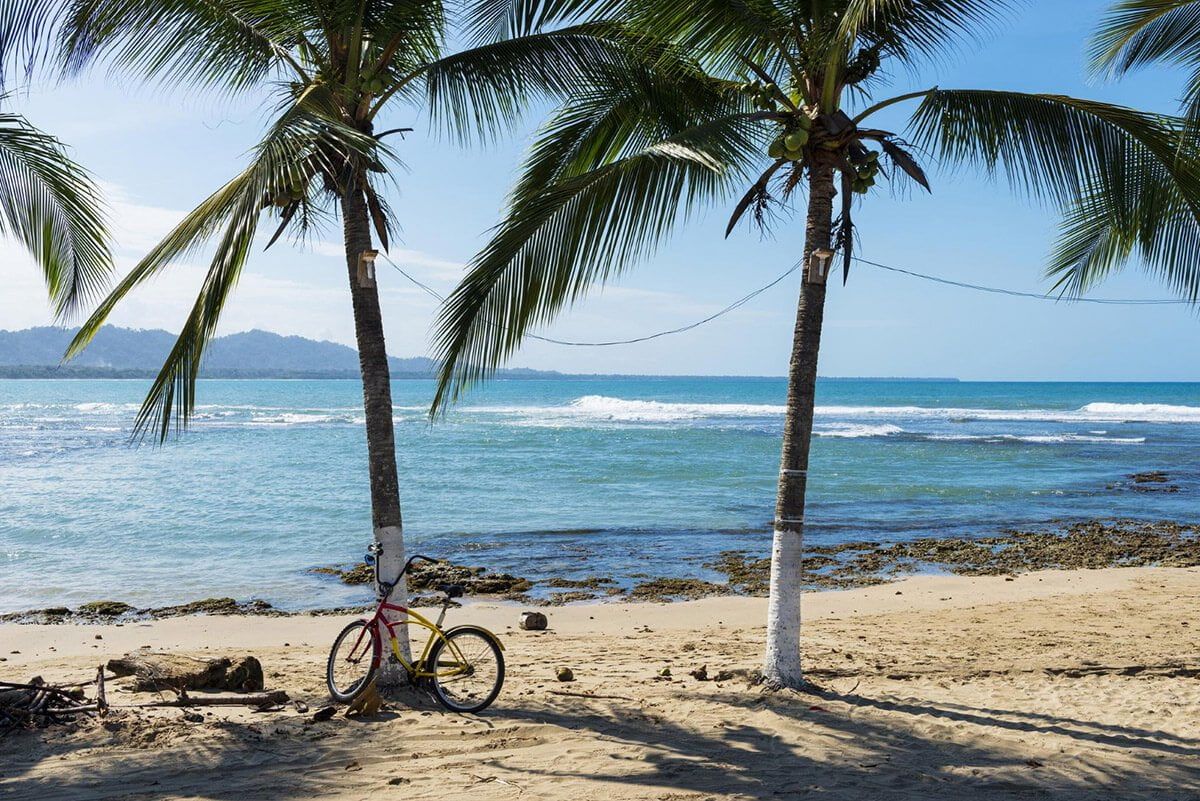 Beach on Caribbean Coast, Costa Rica
Beach on Caribbean Coast, Costa Rica
Cahuita National Park, located in southeastern Costa Rica, has become a major destination due to its pristine beaches and lush rainforest. The park was established in 1982 and covers approximately 2,800 acres of dry land and up to 55,000 acres of marine land. Cahuita National Park is the only National Park in Costa Rica that doesn’t charge an entrance fee. Instead, they rely on donations. For more information about the park and what you can do once you’re there, read on.
The Location & History of Cahuita National Park
 Sandy Beach in Cahuita, Costa Rica
Sandy Beach in Cahuita, Costa Rica
Cahuita National Park is located on the Caribbean Coast of Costa Rica in the Limón province and is a long way from San José. If you’re planning to visit, you may need to take a bus or a plane to the Limón province. You can access the national park through the town of Cahuita which is connected to the park. The park was created to protect the different fish species, species of coral reef, beaches, lowlands, and the abundance of wildlife. The name of the park, Cahuita, has become a secondary word for relaxed. Originally, Cahuita National Park was known as the Cahuita National Monument, but it was soon reformed in 1982 into a national park.
You may be wondering: What makes Cahuita National Park unique? Cahuita National Park’s significance is due to the great coralline reefs that are close to the shore. There are more than 500 species of fish that live within the reefs, so there is lots of room for snorkeling during the dry season. However, snorkeling is not permitted without a qualified guide. Between the reefs are nesting grounds for sea turtles and the reefs are home to a wide variety of marine life. And, there are even two sunken ships for you to explore if you end up snorkeling! It’s in shallow blue water, so don’t worry about having to go too deep.
Unfortunately, in 1991 there was an earthquake that lifted a big portion of the coral reefs which caused 10 feet of the reef to perish. It’s classified as an ecosystem that is on the edge of extinction because of the 1991 earthquake. If it rains while you are there you will find that the visibility of the reefs is limited to a few feet for a few consecutive days due to the sand muddying the water brought down from the Estrella river. This is the result of legal, and illegal logging of the Cahuita forests from the park. The sand carried over from the river during rainfall causes the sunlight the reefs need for survival to be blocked, resulting in the further perishing of the coral reefs. Rainy days aren’t good for coral reef health either. The sun’s rays combined with the excess fertilizers used by the plantation owners from banana plantations (what most of Cahuita Forests lands are planted of) cause plankton blooms that both obstruct the light and pollute the water. This is also why you are not allowed to snorkel in the marine area without a certified guide.
As we mentioned at the beginning of the article, Cahuita National Park doesn’t charge an entrance fee, but you have to make sure that you enter from the main park entrance. If you enter the park through the Puerto Vargas region, it will be a $5 or 1,000 colones admission fee. Puerto Vargas is south of the town of Cahuita. Puerto Vargas is also a beach that is connected to the Cahuita National Park.
Things To Do In Cahuita National Park
 White-Faced Capuchin Monkey in Costa Rica
White-Faced Capuchin Monkey in Costa Rica
There are many things to see, do, and experience at the Cahuita National Park, and in the surrounding areas like the town of Cahuita.
Visit Cahuita National Park
The town of Cahuita and Cahuita National park is not that busy but it’s still a perfect spot for any traveler wanting to experience Costa Rica’s nature, lush jungles, and beaches in a pristine environment without the crowds. The park is open every day from 6:00 A.M. until 5:00 P.M. For swimming and snorkeling, the visibility is best during the months of February through April. You can hire tour guides ahead of time or wait until you arrive. You can expect to spend between $20 and $30 per hour for a guided tour. Guides should have binoculars on them so you can see all the animals up close. If you’re planning to get a guide, don’t show up too early because most of them don’t show up until 8 AM.
Swim and Sunbathe on the Cahuita National Park Beach
There are only two beaches where you can swim safely. You can visit the beach at Playa Blanca, which is located north of the park to swim and sunbathe, or Puerto Vargas, which is south of the park and has the most beautiful beach and palm trees. Playa Blanca has beautiful white sand beaches. The southern beaches are an important nesting site for marine turtles so you are not allowed to swim in those areas, and you may be exposed to dangerous currents.
Visit Cahuita’s Beautiful Forests
The Cahuita Forest’s or Sendero de la Punta Cahuita hiking trail is 5 miles long with an elevation of about 350 ft. The hike is relatively flat and takes you through two river crossings. The water level of the rivers depends on the rides and season, but it’s usually never more than knee-high. The hike, starting from Kelly Creek Ranger Station leads to the beaches, Punta Cahuita (Cahuita Point), and eventually ends at Puerto Vargas. You can also enter the trail from the “Kelly Creek” entrance. The route is perfect for spotting birds like herons, toucans, and other animals like howler monkeys, white-faced monkeys and capuchin monkeys.
Enjoy Caribbean Culture and Cuisine in the Town of Cahuita
The Caribbean coast was settled by Africans in the late 1800s to build the coffee railroad from San José. Because of that, the town of Cahuita has a heavy Caribbean culture and influence. There are a few restaurants and bakery stands that serve delicious Caribbean cuisine and the town has an overall Caribbean look and vibe.
Best Time To Visit
 Puerto Viejo de Talamanca, Costa Rica
Puerto Viejo de Talamanca, Costa Rica
Cahuita is a little local town so if you’re looking to stay near Cahuita National Park, in proximity to a couple of beautiful beaches, but also in close distance to Puerto Viejo (a hot tourist spot), then Cahuita is a great option. It’s a very nice and accommodating place with very few tourists because it’s in close proximity to Puerto Viejo and most people would rather stay there than in a small town like Cahuita. Puerto Viejo is also a great place to visit if you have some spare time. It’s not too far from Cahuita and offers a wide variety of things to do and experiences to have.
Even though you can visit Costa Rica at any time of year, Costa Rica’s weather highly differs during different times of the year. It’s best to visit during the dry season to avoid the rain as much as possible. For more information on when the dry season and rainy season are, and how the weather in Costa Rica is in general, please reference our Weather in Costa Rica article.








